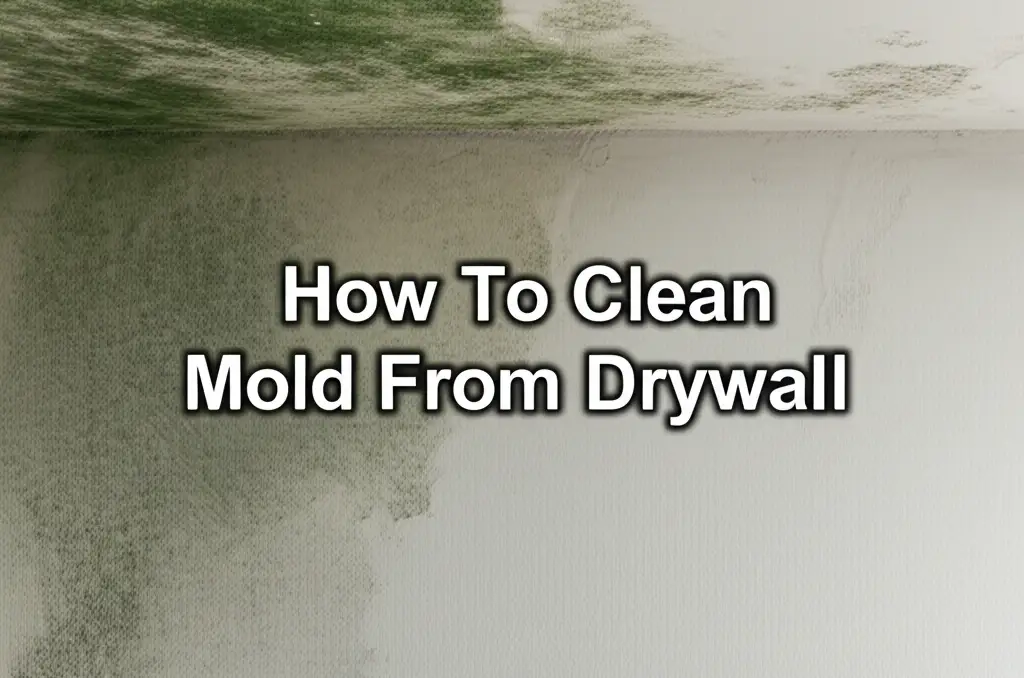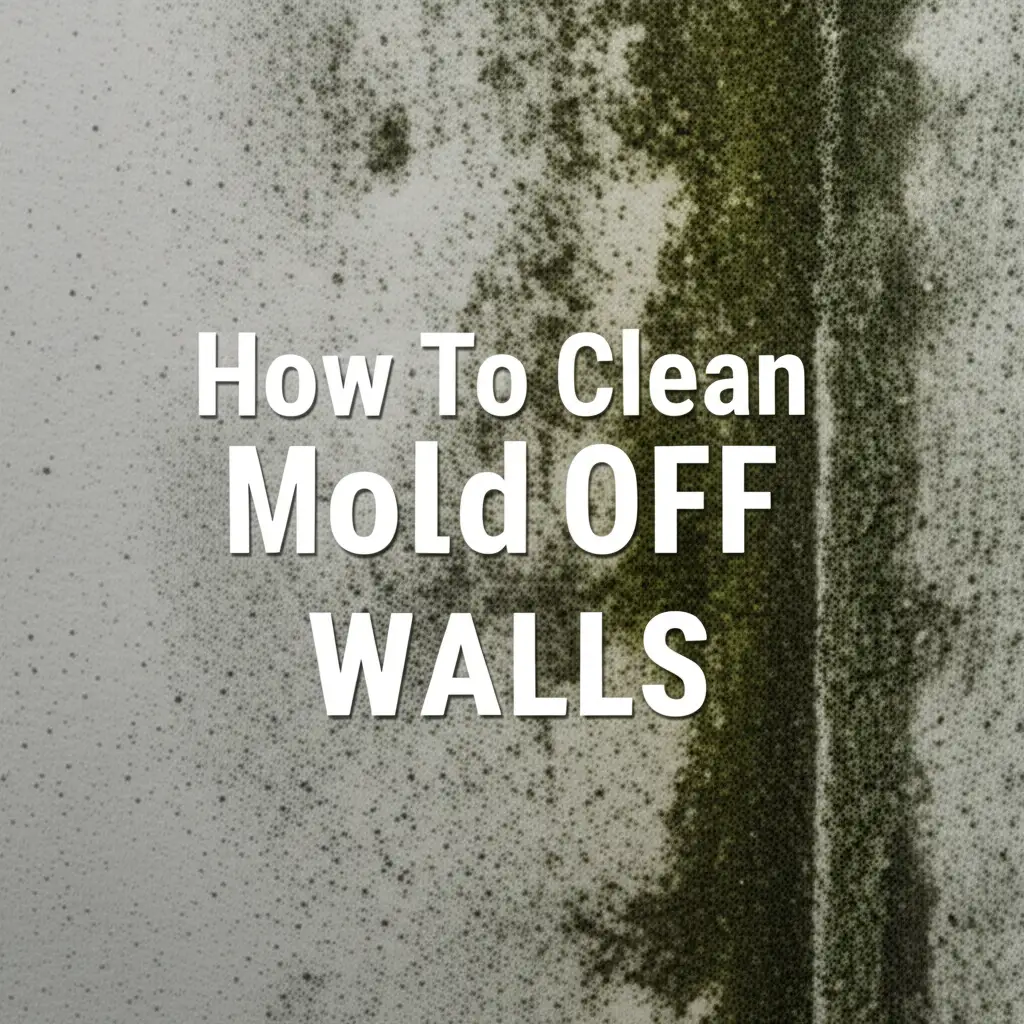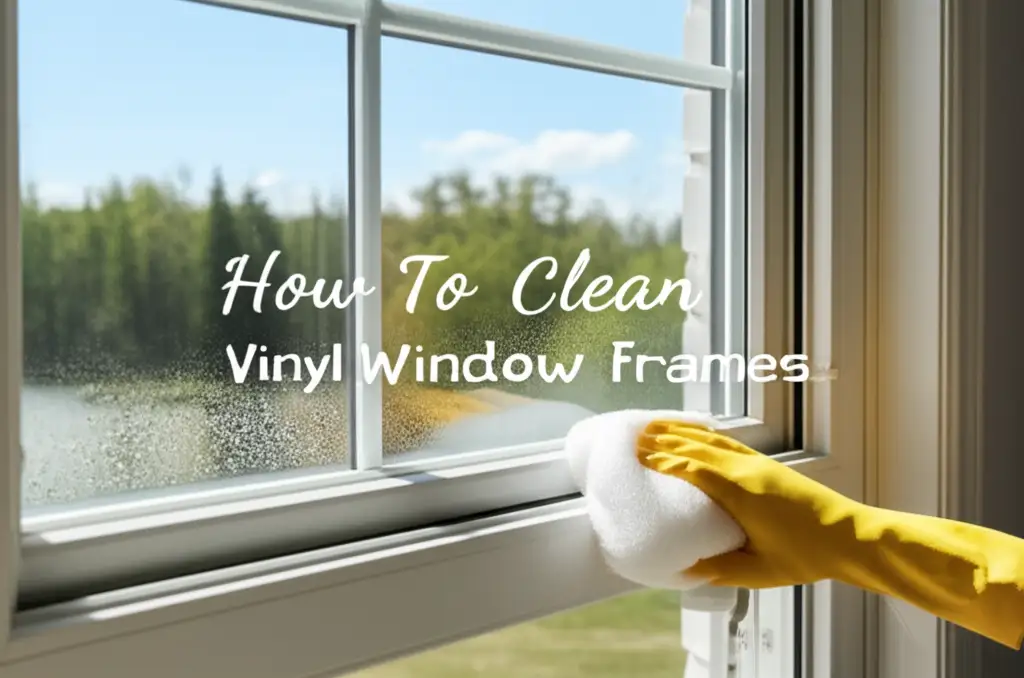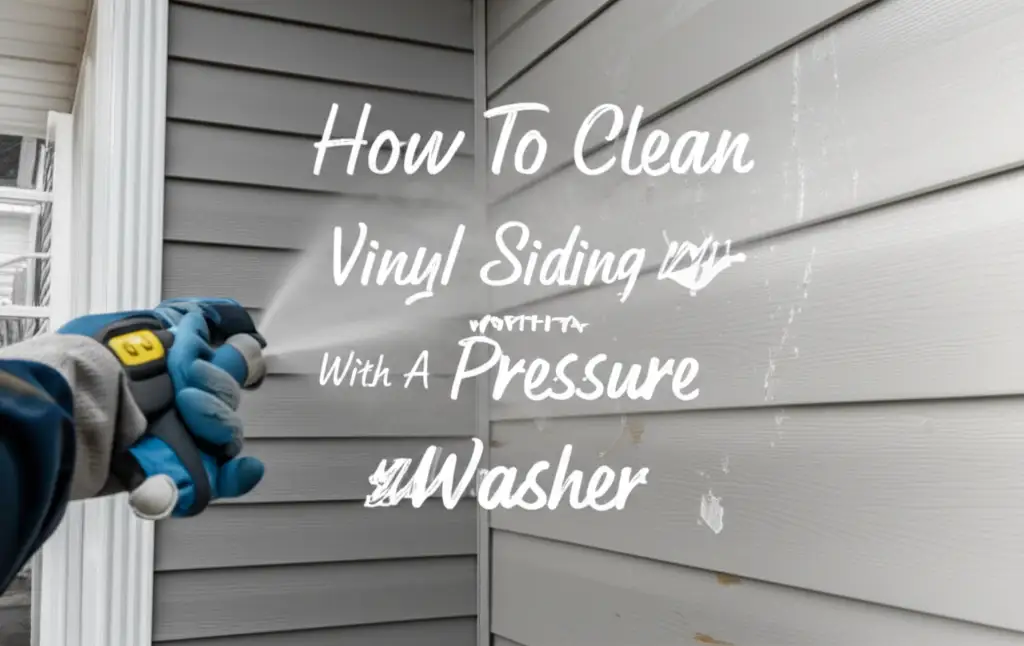· Home Maintenance · 17 min read
How To Clean Mold From Drywall

Effectively Clean Mold From Drywall: Your Guide
Finding mold on your drywall can be unsettling. You might spot a small dark patch or notice a musty smell. This common household problem affects many homes, and knowing how to clean mold from drywall safely and effectively is important. Mold can spread quickly if left untreated, impacting both your home’s structure and your indoor air quality.
This comprehensive guide helps you understand why mold grows on drywall and how to tackle it. We will cover essential safety measures you need to take. You will learn the right tools and cleaning solutions for the job. We provide a clear, step-by-step process for cleaning mold from drywall. Finally, we will discuss how to prevent mold from returning and when to seek professional help. I want to help you restore your home to a clean and healthy state.
Takeaway
- Prioritize Safety: Always wear protective gear like gloves, masks, and eye protection.
- Assess Mold Growth: Determine if the mold is surface-level or extensive before cleaning.
- Choose Right Solution: Use appropriate cleaning agents like vinegar, hydrogen peroxide, or a commercial mold remover.
- Ensure Proper Drying: Thoroughly dry the area after cleaning to prevent re-growth.
- Prevent Future Issues: Address moisture sources, improve ventilation, and control humidity.
Cleaning mold from drywall involves assessing the mold’s extent, gathering appropriate safety gear and cleaning solutions, and then carefully scrubbing the affected area. Always ensure thorough drying and address underlying moisture issues to prevent recurrence. For large or deeply embedded mold, professional remediation is advisable.
Understanding Drywall Mold: Why It Appears
Mold is a type of fungus. It thrives in damp, dark, and humid environments. Drywall is particularly susceptible to mold growth. Its paper facing and gypsum core offer a perfect food source when moisture is present. This porous material absorbs water easily. Once damp, it becomes a prime spot for mold spores to settle and multiply.
You might notice mold as fuzzy patches, often green, black, or white. Sometimes, you smell a strong, musty odor even before you see the mold. Ignoring mold can lead to more serious issues. It can damage your home’s structure. It can also cause health problems for occupants, especially those with allergies or respiratory conditions. Knowing what causes mold helps you prevent it.
Common Causes of Mold Growth
Several factors contribute to mold growing on drywall. Water leaks are a primary cause. This includes leaky pipes, roof leaks, or overflowing sinks. High humidity also plays a big role. Homes in humid climates or those without proper ventilation often experience mold.
Poor ventilation traps moisture indoors. Bathrooms, kitchens, and basements are common areas for mold due to this. Flooding or significant water damage can also lead to widespread mold if not addressed quickly. Even condensation from cold pipes or windows can provide enough moisture for mold to start. Each of these situations creates a welcoming home for mold spores to grow on your drywall.
Essential Safety Precautions Before You Start
Safety must be your top priority when dealing with mold. Mold spores can become airborne during cleaning. Breathing them in can irritate your respiratory system. It can also trigger allergic reactions or asthma attacks. Some types of mold can be toxic. Protect yourself and others in your home before you begin any cleaning.
Ensure children and pets are away from the work area. Open windows and doors to increase air circulation. This helps to vent mold spores and cleaning fumes. You should also cover nearby furniture and floors with plastic sheeting. This prevents mold spores from settling on clean surfaces. Taking these steps creates a safer work environment for you.
Personal Protective Equipment (PPE)
Wearing the right protective gear is crucial. You need to create a barrier between yourself and the mold. I always recommend wearing a high-quality N-95 respirator mask. This mask filters out mold spores from the air you breathe. Simple dust masks are not enough.
Next, wear safety goggles or glasses. These protect your eyes from mold spores and cleaning solutions. Wear long rubber gloves to protect your hands. Choose gloves that extend up your forearms. Disposable gloves are best. Consider wearing old clothes that you can wash separately or dispose of afterward. This prevents spreading mold spores to other areas of your home.
Isolating the Area
Isolating the affected area helps contain mold spores. This prevents them from spreading to other parts of your house. Close the door to the room where you are working. If there is no door, hang plastic sheeting over the doorway. Secure it with painter’s tape.
You can use a box fan placed in a window to blow air outside. This creates negative pressure, pulling air out of the room. Do not place the fan where it blows directly on the moldy area. This could spread spores. Proper isolation is key to effective and safe mold removal. It keeps your home cleaner overall.
Assessing the Damage: When to DIY vs. Call a Pro
Before you jump into cleaning, you need to assess the mold’s extent. Not all mold problems are suitable for DIY cleaning. Some situations require professional mold remediation. Understanding the difference helps you make the right decision. It saves you time, money, and potential health risks.
Look closely at the affected area. Consider the size of the mold growth. Also, think about where the mold is located. Try to identify the source of moisture. If the moisture source is not fixed, the mold will surely return. Be honest about your comfort level with mold removal.
Small, Surface Mold
You can typically handle small areas of surface mold yourself. This includes mold patches less than 10 square feet (about 3 feet by 3 feet). This type of mold usually appears as a thin layer on the drywall surface. It often results from high humidity or minor condensation. You can often clean these areas with common household products.
Look for areas where mold has just started to form. It should not appear deeply embedded into the drywall. The drywall itself should feel firm and solid. There should be no signs of structural damage. If the area is small and the drywall is intact, you are likely safe to proceed with DIY methods.
Extensive or Hidden Mold
Extensive mold growth demands professional attention. If the mold covers more than 10 square feet, call a mold remediation specialist. You should also call a professional if you suspect mold is behind the drywall. Signs include persistent musty odors without visible mold. Also, look for bubbling or warping in the drywall, which suggests hidden moisture.
If the mold resulted from significant water damage, like a flood, call a professional. They have the right equipment to dry the area completely. They can also safely remove large quantities of mold. If anyone in your household experiences severe mold-related health issues, consult a professional. They ensure the mold is gone safely and completely. They can also address how to clean black mold off wood if it has spread beyond the drywall.
Gathering Your Tools and Cleaning Solutions
Once you have assessed the mold and ensured your safety, it is time to gather your supplies. Having everything ready before you start saves time and makes the process smoother. You will need a variety of tools. These tools help you apply cleaning solutions and scrub the mold away. Choose your cleaning solution based on the type and severity of the mold.
Do not mix different cleaning solutions, especially bleach with ammonia. This creates dangerous fumes. Always read product labels for specific instructions. Proper preparation ensures you have an effective and safe cleaning process.
Household Cleaning Agents
You have several effective options using common household products:
- White Vinegar: This is a popular choice for mold removal. Vinegar is mildly acidic and can kill many types of mold. It is also non-toxic. Pour undiluted white vinegar into a spray bottle.
- Hydrogen Peroxide: A 3% solution of hydrogen peroxide also works well. It acts as an antifungal and antiviral agent. Hydrogen peroxide is safer than chlorine bleach and has no toxic fumes. Spray it directly onto the mold.
- Borax: This natural mineral can inhibit mold growth. Mix one cup of borax with one gallon of water. You can apply it with a sponge or spray bottle. Borax leaves a residue that helps prevent future mold growth.
- Baking Soda: While not a strong killer, baking soda is a good deodorizer. It helps absorb moisture and can clean light surface mold. Mix a quarter tablespoon with water to form a paste.
Remember, for porous surfaces like drywall, these solutions need time to soak in. This allows them to effectively kill the mold at its roots.
Specialized Mold Removers
For more stubborn or extensive mold, consider commercial mold removers. These products often contain strong chemicals designed specifically for mold. They can be very effective. Always follow the manufacturer’s instructions carefully. Ensure you have proper ventilation when using these products.
You will also need some basic tools:
- Spray bottles: For applying liquid cleaning solutions.
- Stiff-bristle brush or scrub brush: For scrubbing away mold. An old toothbrush can work for small, tricky spots.
- Sponges or rags: For wiping down surfaces. Use disposable ones if possible.
- Buckets: For mixing solutions and rinsing.
- Heavy-duty trash bags: For disposing of moldy materials and cleaning waste.
- Fans or dehumidifiers: For drying the area thoroughly after cleaning.
- Sandpaper (fine-grit): For gently sanding away any remaining stains or residues on the drywall surface after it is completely dry.
Gathering these items before you start saves trips and keeps you focused on the task.
Step-by-Step Guide to Cleaning Mold From Drywall
Now that you are prepared, it is time to tackle the mold. Follow these steps carefully for effective mold removal. Work slowly and methodically. This helps ensure you remove all visible mold and prevent its return. Remember to maintain your safety precautions throughout the process.
The key is not just to clean the surface, but to kill the mold that might have penetrated slightly into the drywall. Be patient, as thorough cleaning takes time.
Prepare the Area:
- Ensure the room is well-ventilated by opening windows and doors.
- Put on all your personal protective equipment (PPE): N-95 mask, safety goggles, and rubber gloves.
- Lay down plastic sheeting or old towels to protect the floor and nearby furniture from mold spores and cleaning solutions.
- Remove any items from the affected wall area.
Apply the Cleaning Solution:
- Choose your preferred cleaning agent (white vinegar, hydrogen peroxide, borax solution, or commercial mold remover).
- Generously spray the moldy area with the chosen solution. Make sure the entire mold patch is saturated.
- Allow the solution to sit on the mold for at least 10-15 minutes. This gives it time to penetrate and kill the mold spores. For vinegar, a full hour is ideal.
Scrub the Mold Away:
- Using a stiff-bristle brush, gently scrub the mold from the drywall surface. Start from the outer edges of the mold and work inward. This helps prevent spreading spores.
- Apply firm but gentle pressure to avoid damaging the drywall. Drywall is delicate when wet.
- For stubborn stains, reapply the solution and scrub again. You might notice the mold lifting and turning a different color.
Wipe Down the Area:
- After scrubbing, use clean, damp rags or sponges to wipe away the loosened mold and cleaning solution.
- Rinse your rags frequently in a separate bucket of clean water. Do not reuse water that contains mold spores.
- For solutions like borax, you might choose to leave a thin layer to help prevent future mold. For others, wipe until the surface is clean.
Dry Thoroughly:
- This step is critical for preventing mold re-growth. Mold needs moisture to survive.
- Use fans, dehumidifiers, or open windows to dry the area completely. Aim for at least 24-48 hours of drying time.
- Ensure the drywall feels completely dry to the touch before proceeding. You can use a moisture meter to be sure.
- For mold on basement walls, thorough drying is even more critical due to inherent dampness. Learn more about how to clean mold off basement walls.
- Similarly, if you are tackling a bathroom ceiling, proper ventilation and drying are paramount. You can find specific tips on how to clean mold from bathroom ceiling.
Dispose of Materials:
- Place all used rags, sponges, plastic sheeting, and any other contaminated materials into heavy-duty trash bags.
- Seal the bags tightly and dispose of them outside your home.
- Wash any reusable items (like your brush) thoroughly with hot water and soap.
Inspect and Re-evaluate:
- Once the area is dry, inspect it carefully. Look for any remaining mold stains or odors.
- If stains persist, you can gently sand the area with fine-grit sandpaper. Remember to wear your mask during sanding.
- If you find significant mold remaining, or if the drywall appears damaged, consider professional help.
By following these steps, you greatly increase your chances of successfully cleaning mold from your drywall.
Drying and Preventing Future Mold Growth
Cleaning the mold is only half the battle. If you do not address the underlying moisture problem, the mold will surely return. Proper drying after cleaning is essential. Then, you must implement long-term prevention strategies. This ensures your home remains mold-free.
Mold spores are everywhere in the air. They only need moisture to start growing. Your goal is to make your drywall an inhospitable environment for them. This means controlling humidity and quickly addressing any water issues.
Ensuring Complete Dryness
After cleaning, the drywall must dry completely. Any residual moisture can lead to new mold growth. Use fans to circulate air directly on the cleaned area. Position them so they blow across the surface. This speeds up evaporation.
Dehumidifiers are also incredibly effective. They pull moisture from the air, reducing overall humidity levels. This is especially helpful in damp basements or bathrooms. Keep fans and dehumidifiers running for at least 24-48 hours. The drywall should feel dry to the touch. You can even use a moisture meter to confirm low moisture levels. This step ensures that the mold does not have the moisture it needs to regrow.
Long-Term Mold Prevention Strategies
Preventing mold is simpler than cleaning it. Focus on controlling moisture sources in your home.
- Fix Leaks Promptly: Repair any leaky pipes, roofs, or windows immediately. Even small drips can cause significant mold issues over time. This is the most crucial step.
- Improve Ventilation: Ensure good airflow throughout your home. Use exhaust fans in bathrooms and kitchens. Run them during and after showering or cooking. If you notice mold around your air vents, it might indicate a ventilation issue or moisture buildup in your HVAC system. Cleaning how to clean mold around air vents can also be part of improving indoor air quality.
- Control Humidity: Maintain indoor humidity levels between 30% and 50%. Use a hygrometer to measure humidity. Use air conditioners or dehumidifiers during humid months. Check your AC unit for mold as well, as it can contribute to humidity issues. Here’s a guide on how to clean mold from AC unit.
- Insulate Pipes: Insulate cold water pipes to prevent condensation during humid weather. This stops water droplets from forming on them.
- Increase Air Circulation: Arrange furniture to allow air to circulate around walls. Avoid pushing furniture tightly against exterior walls.
- Mold-Resistant Products: When renovating or repairing, use mold-resistant drywall or paint. These products contain additives that inhibit mold growth.
By taking these proactive steps, you significantly reduce the chances of mold returning to your drywall.
When to Consider Drywall Replacement
Sometimes, cleaning is not enough. Drywall is a porous material. Mold can penetrate deep into its core, especially after prolonged exposure to moisture. In such cases, replacing the affected drywall is the safest and most effective solution. Trying to clean deeply embedded mold can be futile. It often leaves spores behind, leading to re-growth.
Knowing when to cut your losses and replace drywall prevents recurring mold problems. It also ensures the structural integrity of your home. Do not hesitate to remove damaged sections. This prevents further spread and potential health risks.
Signs of Extensive Damage
Look for specific signs that indicate replacement is necessary:
- Crumbling or Soft Drywall: If the drywall feels soft, spongy, or crumbles when touched, it means water has severely damaged its gypsum core. It has lost its structural integrity.
- Persistent Mold Stains: Even after cleaning, if dark stains remain, the mold has likely stained the paper facing permanently. It might also be deeply rooted.
- Widespread Mold Growth: If the mold covers a large area (more than 10 square feet) or extends beyond the surface into the wall cavity, replacement is typically required.
- Mold Behind the Drywall: If you cut into the drywall and find significant mold growth on the backside or on the studs, you must remove all affected materials. This includes insulation and wood.
- Strong, Persistent Musty Odor: A lingering musty smell, even after cleaning the visible mold, often suggests hidden mold behind the walls.
- Recurrent Mold: If mold keeps coming back in the same spot despite your cleaning efforts and addressing moisture, it is probably deeply embedded.
Replacing damaged drywall allows you to thoroughly clean the wall cavity behind it. You can inspect for additional mold on studs or insulation. This ensures a clean slate and a healthier living environment.
FAQ Section
Can mold on drywall make you sick?
Yes, mold on drywall can cause health issues. Mold spores, when inhaled, can trigger allergies, asthma attacks, and respiratory problems. Symptoms often include sneezing, coughing, watery eyes, and skin irritation. People with weakened immune systems or existing lung conditions are more vulnerable to severe reactions. It is important to address mold quickly.
What kills mold on drywall instantly?
No single solution truly “instantly” kills all mold on drywall. Effective mold removal requires the cleaning solution to sit and penetrate. White vinegar, hydrogen peroxide, or commercial mold removers are effective. They need contact time to kill the mold thoroughly. Scrubbing and proper drying are also essential for complete removal.
Can I paint over mold on drywall?
No, you should never paint over mold on drywall. Painting over mold will not kill it. The mold will continue to grow and spread beneath the new paint layer. This can lead to worse damage and ongoing health issues. Always clean and thoroughly dry the moldy area before applying any paint or primer.
How do you know if mold is behind drywall?
You can suspect mold behind drywall if you detect a strong, musty odor without visible mold. Look for signs of water damage, like bubbling, peeling paint, or discoloration on the drywall. Chronic leaks or high humidity in a specific area also suggest hidden mold. Sometimes, a professional may use a moisture meter or thermal camera to detect hidden moisture.
Is white mold on drywall dangerous?
All types of mold, including white mold, can potentially cause health problems. White mold might appear fuzzy or powdery. It can often be confused with efflorescence, a mineral deposit. However, if it smells musty or grows in damp areas, treat it as mold. Always take precautions when dealing with any type of mold.
How long does it take to clean mold from drywall?
The time it takes to clean mold from drywall depends on the size and severity of the mold growth. For small patches, the cleaning process itself might take 30 minutes to a few hours. However, you must allow for thorough drying, which can take 24-48 hours. Larger areas or hidden mold will take much longer and might require professional help.
Conclusion
Finding mold on your drywall can seem daunting, but effective cleaning is possible with the right approach. We have walked through the entire process, from understanding why mold appears to taking crucial safety precautions. You now know how to assess the damage and decide when to clean it yourself or call a professional. We covered the tools and cleaning solutions you will need. You also received a detailed, step-by-step guide on how to clean mold from drywall.
Remember, thorough drying is as vital as the cleaning itself. Implementing long-term prevention strategies like fixing leaks and controlling humidity will keep your home mold-free. Prioritizing safety, acting quickly, and being thorough are your best defenses against mold. Keep your home healthy and your drywall clean. If the mold problem feels too large or complex, do not hesitate to seek professional mold remediation. Your health and home are worth it.
- drywall mold
- mold removal
- home cleaning
- DIY mold
- mold prevention
- healthy home




